Cheap video cameras are available for £30 upwards, sold as security devices. These use a CMOS element for imaging and are cheaper than the CCD used in camcorders, although the quality is not as good. You also need a video monitor or TV to see the picture, plus a video recorder to tape the results.
I bought a Micromart black and white video camera for £29.99 from Maplin. Others are available from DIY shops such as Homebase. This has a resolution of 386 x 256 pixels, and an array of six infra-red LEDs. The camera can detect infra red, leading to some strange effects (it can see through the grille on my loudspeakers), but I disabled the LEDs by cutting the appropriate track.
The lens used is a cheap plastic element. I removed this and use my SLR lenses instead, as in the picture below.
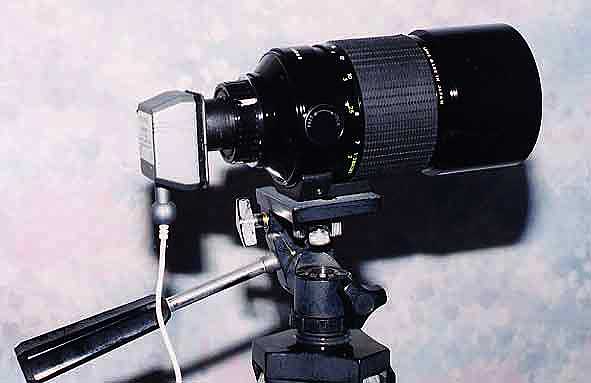
This is a 600mm focal length mirror lens. It's handy for this job as it has a tripod bracket as on the barrel. Normally such a lens gives a magnification of about 12x (standard lenses are 50mm), but that's with 36x24mm negatives. The camera element is 1/4" diagonal - a little maths shows that we now get a magnification of about 80. This is more than enough to fill the screen when looking at the Moon. I've also used it to film little birds a hundred yards away in the field across the road from my house.
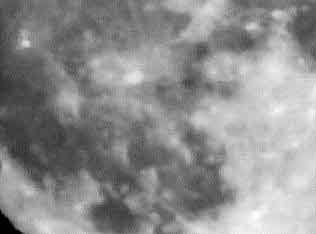
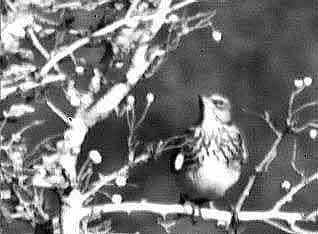
The adaptor was made from a film canister mounted in a hole cut in a lens cap. The lens cap was bought at a local camera shop - Pentax K type in this case. The film canister needs to be attached so that the camera is the correct distance from the back of the lens, otherwise you won't be able to focus properly. The IR LEDs had to be disabled for this as otherwise they would light up the back of the lens and you would see little else.
For my next trick, I attached the camera to my telescope. A second film canister was used for an adaptor. This turned out very well - it is exactly the right diameter to fit in the eyepiece mount, while the top could be jammed into a recess in the front of the camera. I couldn't glue it on, however, as that would stop me getting at the screws which attach the front of the camera.

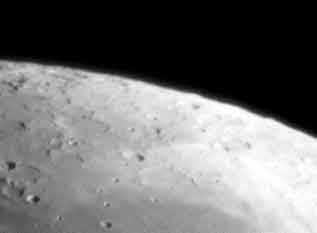
The magnification with this arrangement is about 140. A Barlow lens can be fitted in between the telescope and the camera - a 2x Barlow doubles the magnification.
This set-up gives excellent results looking at the craters of the Moon. I can also watch paraglider pilots flying at a hill 5 miles from my house. It is possible to see the rings of Saturn and Jupiter and its four major moons. Unfortunately, the automatic exposure makes the planets so bright relative to the dark sky that little detail can be seen. It might pay to try looking at the planets when the sky is still light. A better solution would be to buy a camera with manual override on the exposure, but that would cost a lot more than £30.
The next part of my cunning plan was to scan in the video tape of my experiments. About 50 individual frames were saved to disc then spliced together in Adobe Photoshop. The results were a bit variable - first I combined the images into strips which came out OK, but the brightness changed from one strip to the next so bands were visible when I combined them. The part on the right came out OK - click on it for a bigger version. Select one of the links below to see the whole picture -
Postscript
My camera is no more. I broke some of the tiny wires on the sensor while trying to remove dust. Other sensors I've seen since have a clear window over for protection from this kind of damage.
I now have a new camera using a low-light CCD sensor, shown below. It's installed in a proper plastic box, and also has a CPU fan for cooling. Unfortunately I can only use the fan when the camera is connected by a short cable otherwise the motor generates electrical noise which distorts the picture.

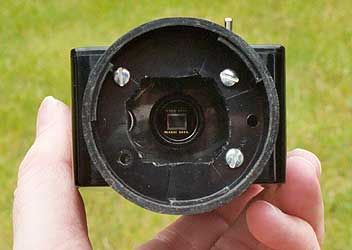
I've also been experimenting with infra red pictures - click here for more details.
